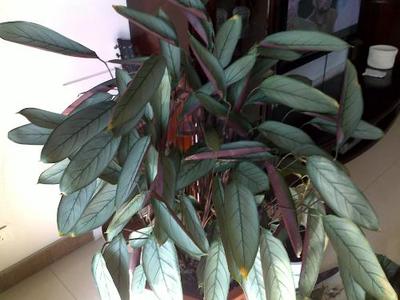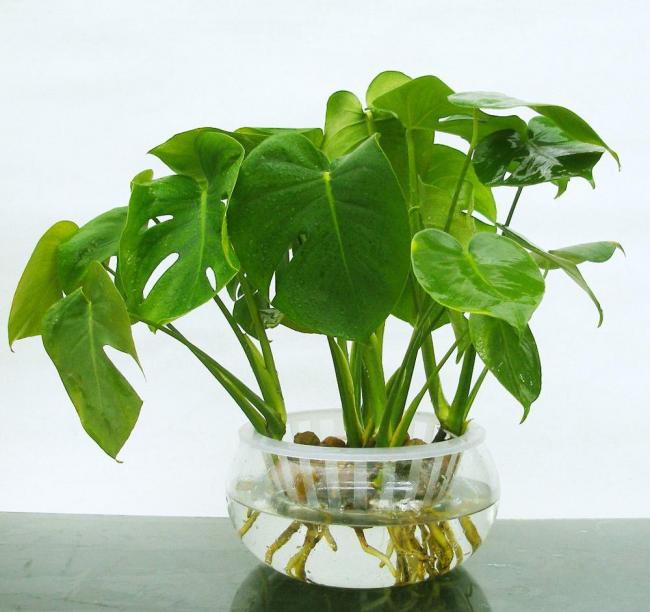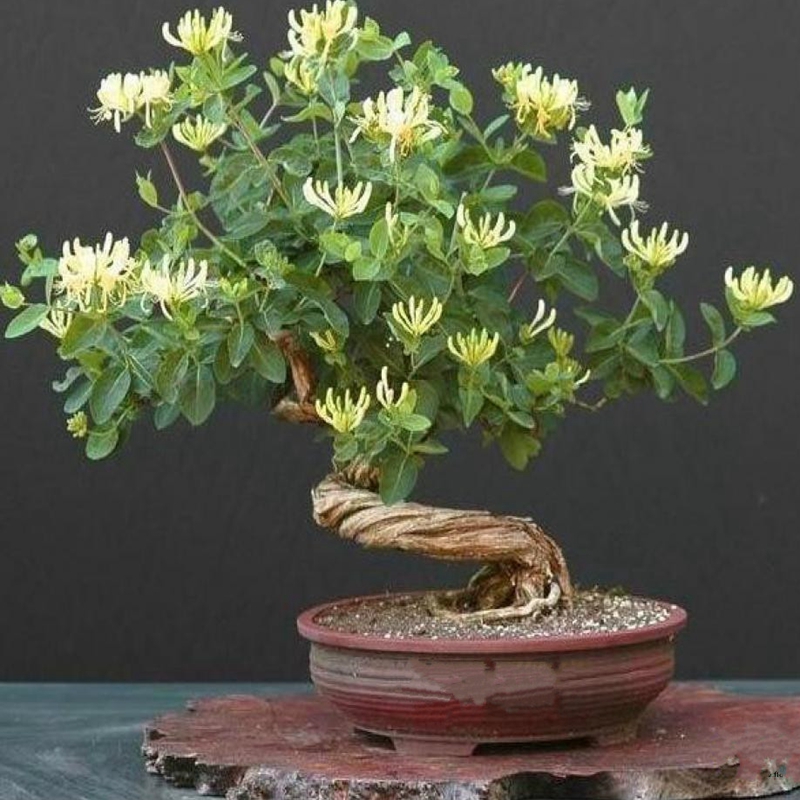The picture of purple-backed taro the culture method of purple-backed taro
It is a good choice to keep some green plants at home. Purple-backed bamboo taro (scientific name: Stromanthe sanguineaSond.): Taro family, genus Amorphophallus, perennial herb. The plant can be up to 80 cm tall and erect. Leaf blade long ovate or lanceolate. Its branches and leaves grow densely, the plant shape is plump, thick leathery, the leaf surface is dark green and shiny, the midrib is light, and the leaf back is blood red, forming a sharp contrast. Spikes, bracts and calyx bright red, petals white. The back is fuchsia. Next, the editor of the net will introduce the purple-backed taro to you.

Perennial herbs, 30 cm to 80 cm high, up to 1.5 m.
Leaves clustered at base, shortly stipitate, leaf blade long elliptic to broadly lanceolate, 30 cm to 40 cm long, 8 cm to 12 cm wide, dark green, glossy, purplish brown on back.
Flowers bisexual, asymmetric, often paired in bracts, forming terminal spikes, 3 sepals, separated; Corolla tube short or long, lobes 3, outer one usually large and somewhat hooded; staminodes 4-2, outer whorl 1-2 (sometimes absent) petal-shaped, larger, one of inner whorl is cucullate, enclosing style, one is hard leathery. Stamens developed, petaloid, anthers 1-loculed, born on one side; ovary inferior, 3-1-loculed; 1 ovule per locule; style oblique, curved, broadened, stigma 3-lobed. Fruit capsule or berrylike; seeds 1-3, hard, with endosperm and aril.
Ramet
Taro generally propagates separately, and the propagation is the best when the temperature is about 20 ℃ in spring, but it can also be carried out throughout the year as long as the temperature and humidity are suitable. When propagating, use a sharp knife to cut the root mass with stem leaves or leaf buds; a small amount of propagation can put the cut root mass with stem leaves and leaf buds directly in the mud basin; when propagating in large quantities, it should be placed on the seedbed; when the temperature and humidity do not meet the requirements, the film should be covered with a film; be sure to make the temperature in the film reach 20-28 ℃, humidity more than 80%.
Cuttage
Cutting propagation generally uses top shoots, cuttings are 10-15 cm long, leaves are retained 1/3 or 1/2 depending on leaf size, cuttings are treated with 500ppm's NAA for 2-3 seconds, and they can also be treated with indoleacetic acid, indole butyric acid and ABT rooting powder. After the cuttings are treated, they are inserted into the seedbed with a row spacing of 5 × 10 cm. It is covered with thin film bow shed, and the management method is the same as ramet propagation. Cutting propagation can be carried out at any time when the temperature is not lower than 20 ℃. Cuttings take root in 30-50 days, but the survival rate of cuttings is not as high as that of ramet propagation; it is generally about 50%.
Taro has underground rhizome or tuber, and its leaves are solitary and large. In addition to the open leaf sheath at the base of the leaf, there is also a significantly expanded joint at the connection between the leaf and the petiole, called "leaf pillow", in which there are water storage cells, which can regulate the direction of the leaf, that is, the leaf is erect when there is sufficient water at night and when there is not enough water in the daytime. The leaf unfolds, which is a characteristic of the family Taro. In addition, some taros also have "sleep exercise", that is, the leaves spread out during the day and fold at night, which is very strange.
Purple back bamboo taro likes humid environment, avoid waterlogging, avoid drought. When the basin soil is slightly dry, it should be watered in time. If the ground can spray water frequently, the increase of air humidity will grow well. If the air humidity is low and the basin soil is dry, the edge of the leaf will turn yellow and scorched. In addition, direct sunlight will also cause the edge of the leaf to become yellow and scorched. Http://cache.baidu.com/c?word=%D7%CF%3B%B1%B3%3B%D6%F1%D3%F3&url=http%3A//www%2E20t%2Enet/user/1122/index%2Ephp%3Flangtype%3Dcn%26pageid%3Dcn%5F5%26add%3Dview%26id%3D139&b=0&a=1&user=baidu camellia is native to Jiangnan provinces in China, which requires a warm and humid climate, which is not suitable for overheating and overcooling. Suitable for fertile, moist, well-drained acid soil, if the soil is alkaline, the leaves yellowed until death, prefer shade environment, not resistant to strong sun exposure. The problem of yellowing of leaves is often encountered in the process of camellia cultivation. The author summarizes the following reasons for reference. 1. As camellia is a flowering plant, some caregivers often focus on applying phosphorus and potassium fertilizer, resulting in insufficient supply of nitrogen in the plant, which is often characterized by the lightening of the leaf color of the lower old leaves and gradually turning to yellow. Solution: apply rotten bean cake water or use 0.1% urea solution once a month. 2. Camellia is a plant that likes acid soil, requiring a ph value of 5.5 to 6.5. If the soil is too alkaline or lacks trace elements such as iron and sulfur, it will make the chlorophyll in the plant incomplete, so that the new mesophyll will turn yellow and albino, but at this time the leaf vein is still green. It's called iron deficiency. Solution: if yellowing has just occurred, it can be irrigated with ferrous sulfate solution every 2 weeks. If the yellowing is more serious, the absorption function of plant roots is greatly reduced at this time, so it is better to apply foliar application by spraying. 3. In the process of cultivation, there is too much water in the cultivation medium, the basin soil is continuously too wet, and the root system of the plant is anoxic for a long time, which leads to the yellowing and shedding of the leaves. 4. In the process of cultivation, the cultivation medium is too dry, in summer high temperature, if the water supply is insufficient or not timely, it will also cause leaves to yellowing. 5. Although Camellia is an evergreen plant, there will be a small amount of basal leaves yellowing and shedding during the long leaf period from April to May, which is a normal metabolism, so don't worry.
Is the purple back taro poisonous? The culture method of purple back taro and the flowering period of purple back taro
Purple-backed taro is a perennial herb of the family Amorphophallus, and it is an indoor shade-loving foliage plant, so what is it? There will be such charm, it has how to cultivate, the editor will talk about this knowledge in detail for you today. . Introduction of purple back taro the whole plant is about 1 meter, upright. Leaf blade long ovate or lanceolate. Its branches and leaves grow densely, the plant shape is plump, thick leathery, the leaf surface is dark green and glossy, the midrib is light, the leaf back is blood red, and the leaf forms a sharp contrast, very beautiful. Spikes, bracts and calyx bright red, petals white. The back is fuchsia. . The growth environment of Amorphophallus angustifolia is native to Central America and Brazil, and is cultivated in many provinces in southern China. It likes warm and humid climate and grows in a shady environment; the optimum temperature for growth is 20-30 ℃, which requires a lot of water and is not resistant to drought. More heat-resistant, slightly cold-resistant, more than 5 ℃ can safely pass the winter. . The culture method of purple back bamboo taro mainly uses the separate plant method to propagate, and several points should be guaranteed during the culture period. Soil: purple back taro likes fertile, loose and moist acid soil with good drainage. Pot cultivation can use rotten leaf soil and river sand to mix evenly, add a small amount of base fertilizer as soil cultivation. To ensure the nutrition and permeability of the cultivated soil. In the growing season, liquid fertilizer is applied twice a month to ensure its growth and promote its branches and leaves to flourish. In addition, the basin is turned once every 1-2 years. . Key points for the maintenance of purple-backed taro: purple-backed taro is an excellent indoor shady foliage plant. In order to prevent sun exposure in hot summer, 70%, 80% of the light should be covered, otherwise it is easy to cause injury; the leaves will fade and become dull; but they should not be placed in a dark and poorly ventilated place for a long time to avoid yellowing and shedding of leaves. . watering: the purple back taro is not resistant to drought, so it is necessary to ensure sufficient water during the growth period, keep the basin soil moist, and often spray water to the leaves; especially in the summer and autumn high temperature season, when the air is dry, it is often necessary to spray water on and around the leaves to maintain high air humidity. Be careful not to make the basin soil stagnant, so as not to affect root ventilation, resulting in poor growth or rotten roots; if the temperature is low after the end of autumn, it is necessary to control the amount of water and keep the basin soil slightly wet. Pest control: the common diseases of purple back taro are leaf spot and leaf blight. At the initial stage of the disease, Bordeaux solution was sprayed 2-3 times every 15 days. It can also be sprayed with Dysen zinc wettable powder solution. The common insect pests are mainly shell insects, which are easy to occur when the ventilation is poor. . Introduction to the flowering period of purple-backed taro, purple-backed taro is mainly a foliage plant. Basically, if the temperature is kept above 25 ℃ in a year or so, it will blossom, but its flower is slightly inferior to its colorful leaves, which is why many people do not know whether it will bloom or not. . Introduction to the toxicity of purple-backed taro is non-toxic, it is mainly made of potted plants for indoor decoration, is an excellent indoor shade-loving foliage plant, can be watched for a long time. It can not only add a little bit of vitality, but also bring a good mood. . This is the end of the editor's summary of the knowledge about purple-backed taro. This kind of plant is especially good for potted plants. Friends who like it can plant a pot by themselves and put it at home or in the office. It's all good! For more information about flowers, you can click on the link below! Culture methods and matters needing attention of purple-backed taro picture appreciation
The branches and leaves grow densely, the plant shape is plump, thick leathery, the leaf surface is dark green and glossy, the midvein is light, the leaf back is blood red, forming a sharp contrast, spikes, bracts and calyx bright red, petals white, the back is purplish red, and the ornamental value is relatively high. It is an excellent indoor foliage and flowering plant. What are the breeding methods and matters needing attention of the purple back taro? Let's learn about this:
Pictures of purple back taro
Basic information of purple back taro:
Purple-backed taro, a perennial herb. Amorphophallus family, Amorphophallus. Alias: red back bamboo taro, red back bamboo taro, lying flower bamboo taro, is an excellent indoor shady foliage plants. It is an excellent foliage and flower ornamental plant, which is used to decorate bedrooms, living rooms, offices and other places. It is quiet and dignified and can be enjoyed for a long time. Originally from Brazil.
Pictures of purple back taro
The culture method of purple back taro:
1. Soil: purple-backed taro likes loose, fertile, moist and well-drained acid soil. Pot cultivation can use rotten leaf soil, garden soil and river sand as the same amount of mixed soil and a small amount of base fertilizer as culture soil, which requires that the soil is nutritious, loose and ventilated.
2. Watering: the purple back bamboo taro is not resistant to drought, so it is necessary to give sufficient moisture in the growing season, keep the basin soil moist frequently, and pay attention to spraying water to the leaves, especially when the temperature is high and the air is dry in summer and autumn. to maintain high air humidity. However, attention should not be paid to the accumulation of water in the basin soil, so as not to affect the ventilation of the roots, resulting in poor growth or rotten roots; the temperature is relatively low after the end of autumn, so it is necessary to control the amount of watering and keep the basin soil slightly wet.
3, lighting: purple back taro like shade, avoid direct sunlight, do not put in the sun, otherwise the leaves fade green, lose luster, serious sunburn will cause; but also should not be placed in the dark and poor ventilation for a long time, so as to avoid leaves yellowing and falling off.
4. Fertilization: in the growing season, liquid fertilizer is applied twice a month to ensure its robust growth and luxuriant branches and leaves.
5. Insect diseases: the common diseases of purple back taro are leaf spot and leaf blight. At the initial stage of the disease, 200 times Bordeaux solution was sprayed 2-3 times every half month. It can also be sprayed with 600 times solution of 65% Dysen zinc wettable powder. The common insect pests are mainly shell insects, which are easy to occur when the ventilation is poor. Spray with 1000 times of 50% fenitrothion EC in the nymph stage.
Pictures of purple back taro
Points for attention in culturing Amorphophallus sinensis
1. Purple-backed taro is an excellent indoor shady foliage plant. In order to prevent sun exposure in hot summer, 70%, 80% of the light should be blocked, otherwise it is easy to cause harm.
2. If the air humidity is low and the basin soil is dry, the edges of the leaves will turn yellow and scorched. In addition, direct sunlight will also cause the edges of the leaves to turn yellow and scorched.
3. Purple back taro should be turned once every 1-2 years.
Pictures of purple back taro
The propagation method of purple back taro:
Plants with exuberant growth can be divided into pots every 1-2 years. Ramet should be carried out after the temperature warms up in spring, cut the tufted plants into several clumps along the growth direction of underground rhizome, then plant them in pots, keep them in a shady place, and manage them according to the conventional method after rooting. In addition, the elongated stems and leaves can also be used for cutting propagation.
Purple back taro is used to decorate bedrooms, living rooms, offices and other places, appears quiet, dignified, can be appreciated for a long time, if you like, you might as well try planting and maintenance to beautify the home. So much for the culture methods and matters needing attention of the purple back taro. Please continue to follow us for more information.
- Prev

Culture methods and matters needing attention of tortoise-backed bamboo
When I first saw it, the editor thought it was a kind of turtle. (scientific name: Monsteradeliciosa). Also known as Penglai banana, Euphorbia, evergreen vine. The stem is stout; the young leaves are heart-shaped without holes, and when they grow up, they are broadly ovate and pinnately parted; there are oval perforations between the veins and the leaves are long stalked.
- Next

Bonsai pictures of honeysuckle planting techniques of Honeysuckle Bonsai
Honeysuckle is a kind of herbal medicine. Is there any bonsai in honeysuckle? honeysuckle is a valuable Chinese herbal medicine. Honeysuckle is a perennial semi-evergreen twining shrub of honeysuckle family. The annual flowering period is from May to October, it is white at the beginning, and becomes golden and fragrant after 3 days.
Related
- Fuxing push coffee new agricultural production and marketing class: lack of small-scale processing plants
- Jujube rice field leisure farm deep ploughing Yilan for five years to create a space for organic food and play
- Nongyu Farm-A trial of organic papaya for brave women with advanced technology
- Four points for attention in the prevention and control of diseases and insect pests of edible fungi
- How to add nutrient solution to Edible Fungi
- Is there any good way to control edible fungus mites?
- Open Inoculation Technology of Edible Fungi
- Is there any clever way to use fertilizer for edible fungus in winter?
- What agents are used to kill the pathogens of edible fungi in the mushroom shed?
- Rapid drying of Edible Fungi

